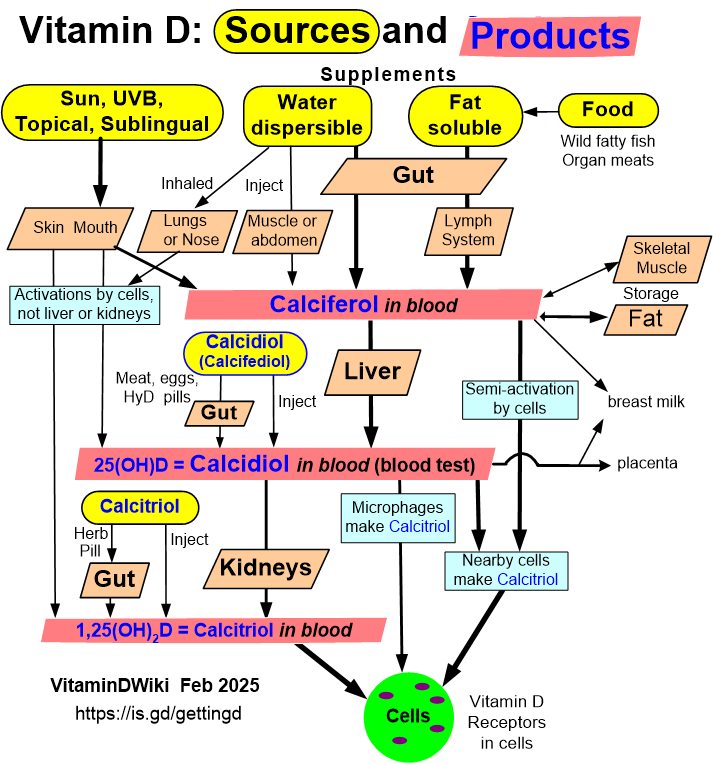Sublingual Vitamin D sometimes is better than tablet
Are Vitamin D₃ Tablets and Oil Drops Equally Effective in Raising S-25-Hydroxyvitamin D Concentrations? - A Post-Hoc Analysis of an Observational Study on Immunodeficient Patients
Nutrients 2020, 12(5), 1230; https://doi.org/10.3390/nu12051230
by Maria Helde Frankling 1,2,*OrcID,Anna-Carin Norlin 3,Susanne Hansen 3,Emilie Wahren Borgström 3,Peter Bergman 3,4OrcID and Linda Björkhem-Bergman 1,2,5
(This article belongs to the Special Issue Vitamin D on Immune Function)

📄 Download the PDF from VitaminDWiki
Background: Vitamin D₃ supplements are available as tablets or oil drops, but there is no consensus as to whether either of these preparations is more effective than the other.
Methods: We compared the effectiveness of tablets versus oil in raising S-25-hydroxyvitamin D (S-25-OHD) in plasma by re-analyzing data from a previously performed observational study in which immunodeficient patients with S-25-OHD concentrations <75 nmol/L were randomly prescribed vitamin D₃ tablets (1600 IU/day) or vitamin D₃ oil-drops (1500 IU/day) for twelve months. Tablets and oil were compared for the effect on S-25-OHD concentrations after 3–5 months and antibiotic use.
Results: Data on S-25-OHD after ≥ 3 months was available for 137 patients treated with tablets and 69 with oil drops. Both groups exhibited a significant increase in S-25-OHD—oil-drops from 55 to 86 nmol/L and tablets from 52 to 87 nmol/L—with no difference between groups (p = 0.77). In a subgroup of patients without immunoglobulin replacement, vitamin D₃ supplementation with oil drops (n = 34) but not with tablets (n = 60) resulted in significantly lower antibiotic administration (p < 0.001 and p = 0.58).
Conclusion: Vitamin D₃ supplementation with tablets and oil drops were equally efficient in raising S-25-OHD concentrations. Only oil drops caused a reduction in antibiotic consumption in immuno-deficient patients who did not receive immunoglobulin replacement.
